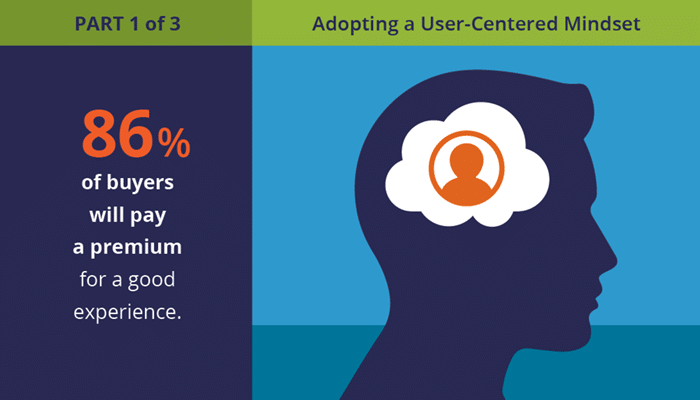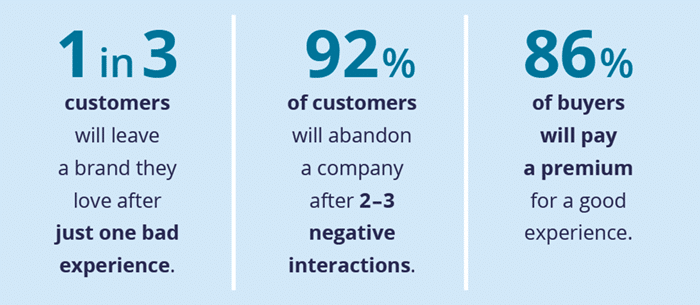Brand Insights
For Health Science Executives
Health Tech Executives with User-Centered Mindsets Unleash Long-Term Growth
Health Tech Executives with User-Centered Mindsets Unleash Long-Term Growth
Adopting a User-Driven Mindset (Part 1)

We know that innovation in healthcare is hard. The industry moves slowly. It is comprised of stakeholders who are often in conflict and are reliant on legacy technology stacks that aren’t keeping pace with evolving workflow environments. Let’s face it, we are years (ok decades) behind when it comes to delivering an ideal customer experience in the ways that tech giants like Apple can provide. Or are we?
Welcome to today’s experience economy. Where… how customers feel about their interactions with your health technology brand—the good, the bad and the ugly—are the deciding factors in whether they decide to start, and continue, to do business with you.
User-Driven Decision-Making in Action
Consider This Simple Real-World Scenario…
A direct competitor offers a technology platform similar to yours. The company designed the technology based on internal knowledge, experiences and assumptions rather than customer use and feedback. They believed that if they quickly built and effectively promoted the off-the-shelf product, customers who try it would see the benefits and start using it while they built the rest of the platform out.
Your health tech company has operationalized a user-centered mindset that drives ideation and design of its platform. You involve customers who will be super-users from the start, so your team knows what they need and want from your product. Early on, you learn that many customers expect your technology to integrate with existing (legacy) systems, such as their electronic medical records (EMR) platforms. A lack of integration is a deal-breaker for these customers, because it could cause workflow delays. For other users, a mobile app version will be more useful. Your product team is proactive about considering this feedback using a prioritization grid system. In turn, the company launches the product and phases in future developments in ways that bring the most meaning to its core group of super-user customers. Product awareness and adoption grows as those super users become influencers.
Meanwhile, your competitor experiences slow to little adoption of their solution because they forgot one critical fact: They are not their users. Ignoring that fact will make winning or regaining their customers’ trust much harder as they rework their solution.
In the experience economy, leaders design solutions alongside those who will eventually use them.
Knowing precisely what your users think, feel, say and do gives your team critical insights from the beginning and throughout your product lifecycle. This is the place where brand loyalty begins. Gathering insights takes time and resources, but they enable your team to pivot as needed and achieve success from the start.
Health tech companies that operationalize user-driven decision-making and bring customers into the product ideation process early can give customers more of what they need and want. Demonstrating to customers that their overall experience with your brand matters to you creates high brand value above and beyond the features and functions of your products and services.
PricewaterhouseCoopers (PwC) International Limited, the second-largest professional services network in the world, says companies that deliver great experiences can charge up to a 16% price premium on products and services while increasing loyalty. PwC’s recent report Experience is everything: Here’s how to get it right reveals:

These numbers prove the importance of staying connected to potential super-users to uncover their preferences and avoid potential pitfalls before they negatively affect the customer experience. Committing to a user-driven mindset as a forever business strategy requires all your executives to focus on solving problems direct users and other external stakeholders really have versus problems your executive team assumes they have. Collecting data through surveys and webinars is helpful, but not enough. By closely partnering with users at every stage, you are better positioned to understand and address their unmet needs in real time, so you can deliver solutions that fit seamlessly into their daily lives. This approach will enable your health tech company to launch and evolve solutions with confidence, knowing they will generate a positive ROI and word on the street.
Innovation Pays
Having a user-driven mindset lets your company break free from shifting trends and instead lead the way with innovation. That’s because basing decisions on user feedback will keep your team from leaning too heavily on trends, guesswork and me-too solutions. Instead, your team can use its full creative energies to deliver distinct, highly competitive solutions tailored to your customers.
When executives listen to customers and respond to their feedback with smart solutions, there are fewer surprises and knee-jerk changes to overall product strategies. And it pays off.
IBM, Google, Airbnb, PepsiCo and Nike are just a few of the wildly successful brands that consider design thinking a core part of their culture and way of doing business. Former PepsiCo CEO Indra Nooyi famously told Harvard Business Review that design had a voice in almost every crucial decision the company made. During her 12 year tenure, sales increased 80%.
Health tech companies work in a world where precision is highly valued. When your product or service is designed to be precisely what your customers need and want, you’re letting them know you share their values, and they will repay you with customer loyalty.
Conclusion
Health tech leaders can bullet-proof their ideas by instilling a companywide customer-centric mindset. When executive teams care as much about what users want (and don’t want) as they care about revenue goals, customer loyalty and positive returns are more likely to follow.
The underlying methodology here is known as design thinking, a philosophy and proven process for human-centered problem-solving that continuously cycles through four phases of innovation: clarify, ideate, develop, and implement. Using this system to identify the gap between customer need and current state, generating ideas to address that gap, putting those ideas into action with a prototype to test for viability and implementing the solution. Additional modifications and iterations may be necessary, returning you to the clarify stage. This endless feedback loop between user input and the solutions your company provides in response is a living process that will help your team continually innovate with your customers in mind.
If you’ve been hearing about these concepts or the experience economy and feel it’s time to understand more, let’s talk. Send me a message through LinkedIn or email me karan@cushmancreative.com.